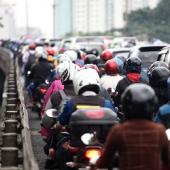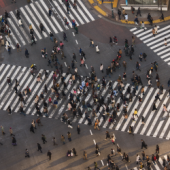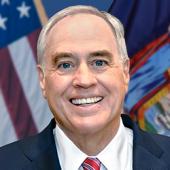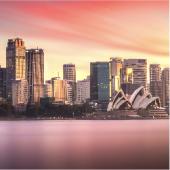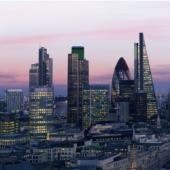High touch, not high tech
IN BRIEF
- The cities of the future begin with finding solutions for the problems of today.
- When envisioning the cities of the future, startups and policy makers need to remember the most important factor: quality of life.
- There is an opportunity to make the right decisions and implement smart and sustainable urban solutions by using technologies that make cities smarter, livable and lovable.
As we slowly begin to emerge from the first global pandemic in a century, big ideas for the cities of the future seem to be everywhere. It’s exciting to look at new startups and imagine our future in a world where every industry has been transformed by technology. The smart city trend is about people forging connections both physically and virtually by using technology; it suggests new ways for people to live, work and go about their daily lives, and new economic opportunities in urban areas and beyond. If you want to predict what cities will be like in the future, look at cities today—and start working on solutions.
How will technology make city living better in the coming decades?
There can be no doubt that cities are our future. As of today, 56.2% of the global population lives in cities. According to the United Nations, by 2050 60% of the world’s population will live in cities and global population is expected to exceed 9 billion. That means that unless the trend is abated, in 30 years our planet will need to accommodate 2 billion additional people. And every single week, about 2 million of those people are moving to cities to access better education, job opportunities and a higher quality of life.
But the cities of the present are far from technological utopias. The rapid growth of cities is creating a need for new buildings, roads and transportation systems. As populations grow, congestion grows and air quality worsens, it’s likely we’ll be facing more health crises on the scale of the one we have been experiencing since the start of 2020.
Cities account for more than 70% of greenhouse gas emissions. Traffic accidents claim more than a million lives every year, with the highest number of incidents happening in developing cities. Migration from flooding or droughts due to climate change will continue to rise, adding to the ongoing issues of people moving from areas affected by political turmoil, war and economic downturns.
A greater focus on sustainability will also be necessary for the cities of the future. Despite its challenges, energy efficiency has become a major part of the agendas of many cities, and investments in this field show no signs of slowing down.
City leaders need to develop policies and take actions on these issues; this is why smart city design has become such a priority. But as leadership turns to startups and tech for solutions, they need to be critical of whether every “smart city innovation” will actually improve city living.
As of today, 56.2% of the global population lives in cities. According to the United Nations, by 2050 60% of the world’s population will live in cities and global population is expected to exceed 9 billion.
Source: The World's Cities in 2018 Data Booklet, United Nations.
Technology is shifting the way we live in cities, but is it solving our problems?
During the last decade, as startups attempted to redesign city life, urban living has been abuzz about new possibilities that could transform cities, especially when it comes to mobility. But some efforts have overstated their value for the cities of the future and overlooked the obvious question: Are they really improving the quality of life for city residents?
Back in 2008, Uber started trading on the New York Stock Exchange after raising $8.1 billion in the biggest U.S. IPO in five years. The company became a tech giant with a promise to help solve some urban mobility issues. However, what we see in megacities such as New York, is that Uber and similar ride-hailing companies are not solving traffic congestion at all. On the contrary, they actually create more traffic, and people tend to use their services for short distances instead of more efficient and environmentally friendly options. Research conducted by the San Francisco County Transportation Authority in 2017 concluded that ride-hailing companies accounted for about 6.5% of the total vehicle miles traveled on weekdays and about 10% on weekends. Without that option, would those people have opted to walk, ride a bike, take public transport or even hop on an electric scooter? All of those options take cars off the road.
Then there’s the case of Hyperloop, the idea popularized by Elon Musk, entrepreneur and CEO of both Tesla and SpaceX. The Hyperloop is a proposed mode of passenger and freight transportation in which vehicles move through a vacuum tube, but there are big questions surrounding Hyperloop’s environmental impact, its effect on carbon dioxide emissions, the effect of infrastructure on ecosystems, and the environmental footprint of the materials that would be used to build it. Other concerns include noise pollution and how to repurpose Hyperloop tubes and tunnels at the end of their lifespan. Tunneling is also expensive and time-consuming and is often an obstacle to expanding existing networks, producing more problems for the future.
Do we need “disruptive” solutions when we think about the future of cities?
I would suggest that we need solutions that look at real needs and issues—and solutions that work.
During the height of COVID-19, city dwellers worldwide got frustrated by the lack of options for getting around—public transportation isn't free, and many riders were afraid to share buses, trains and subways. So, micro-mobility solutions became more and more popular in cities. Big tech companies have been making moves to improve commutes with innovations such as autonomous shuttles and e-bike and e-scooter sharing systems, but most people still live in places where walking or biking is a daunting prospect.
City dwellers don’t necessarily need costly high-speed tunnels or ride-hailing companies that don’t solve the basic problem of traffic congestion. Residents need accessible, walkable, bikeable cities to create vibrant communities and strong local economies. When envisioning the cities of the future, startups and policy makers need to remember the most important factor: quality of life.
We are at a critical moment for cities. Right now, there is an opportunity to make the right decisions and implement smart and sustainable urban solutions by using technologies that make our cities smarter, livable and lovable. This will take enormous political will, leadership, financial and administration capacity. There is a need to develop new policies that will complement the latest technological innovations. All key stakeholders—startups, cities, universities, NGOs, energy, technology, mobility and utility companies—will need to focus on improving the quality of lives, not just technology alone.
Now is the time to end the procrastination and start thinking big. But rather than being dazzled by shiny and buzzy future technologies that promise to remake the future, city leaders must focus on the present: city residents’ needs, and solutions for the problems we are facing right now. Those leaders who do are likely to find themselves as the best shapers of the cities of the future.
City dwellers don’t necessarily need costly high-speed tunnels or ride-hailing companies that don’t solve the basic problem of traffic congestion. Residents need accessible, walkable, bikeable cities to create vibrant communities and strong local economies. When envisioning the cities of the future, startups and policy makers need to remember the most important factor: quality of life.


















